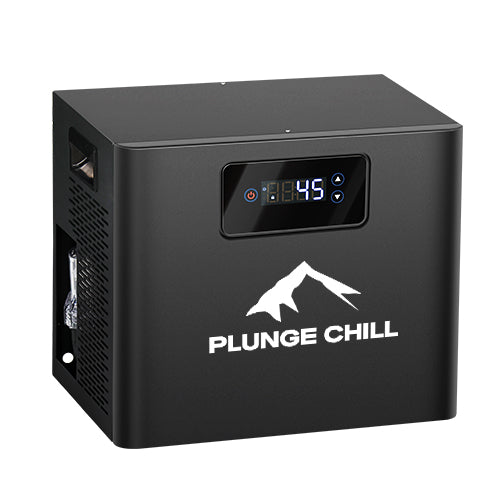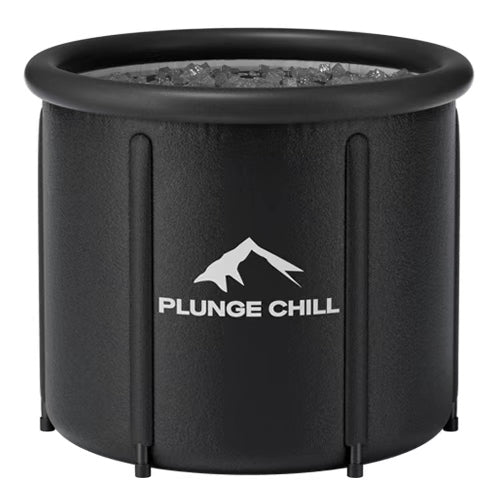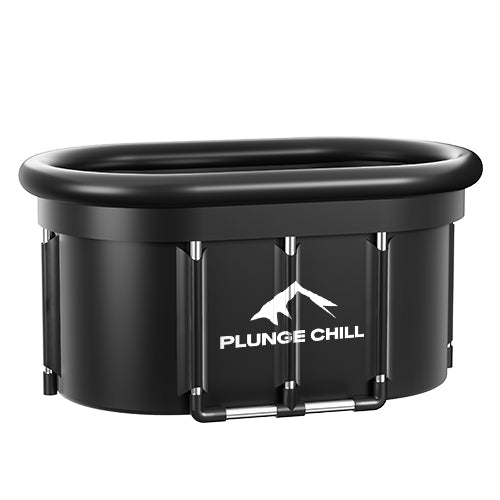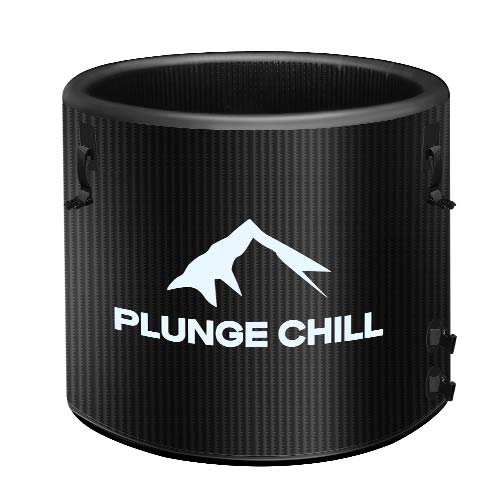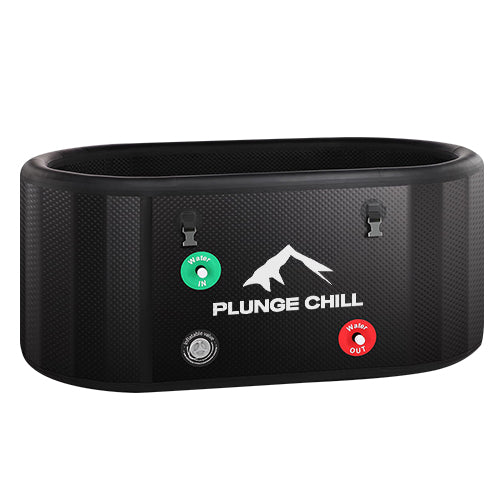Cold plunges, cool showers, and winter swims have become wellness mainstays. As a jewelry editor who road‑tests trends before writing about them, I’ve experimented with cold finishes at the end of my showers and a handful of cautious cold‑water immersions. The immediate sensations are unmistakable: a sharp intake of breath, racing heart, and a skin‑deep chill that gives way to alertness once you warm back up. Beyond the mood lift, a common claim is that cold increases white blood cell counts and “boosts” immunity. The scientific picture, however, is more nuanced. This article explains what white blood cell counts are, how cold affects the body, what human and animal studies actually show about white blood cells and immune function, and how to approach cold safely if you decide to try it. Because this blog’s readership includes jewelry lovers, I also include practical care notes about wearing rings and gemstones around cold water.
What We Mean by White Blood Cell Counts
White blood cells, or leukocytes, are an umbrella category that includes neutrophils, lymphocytes (T cells, B cells, and natural killer cells), monocytes, eosinophils, and basophils. A complete blood count with differential measures the total white blood cell count and, when indicated, the proportions of these subsets. In everyday language, a higher count is often equated with “stronger immunity,” but the reality is contextual. A short‑term increase after stress or exercise can reflect redistribution of existing cells from vessel walls into circulation rather than new immune cells being made, while a sustained elevation may signal infection or inflammation. The term leukocytosis simply means an elevated white blood cell count; it does not specify whether the increase is beneficial or harmful. Because most consumer claims blur these distinctions, it is helpful to examine how cold exposure interacts with these basic immunology concepts.

How Cold Exposure Perturbs the Body
A sudden drop in skin temperature triggers the cold shock response: heart rate, breathing, and blood pressure spike, peripheral blood vessels constrict, and shivering begins to generate heat. Physiologists describe this sequence as a catecholamine surge, dominated by adrenaline and noradrenaline. Case Western Reserve University’s overview notes that metabolic rate can rise several‑fold temporarily and that hyperventilation may persist for minutes, especially in near‑freezing water. Harvard Health has long described the supporting physiology: blood is shunted from the skin to the body’s core to conserve heat, which preserves vital organs at the expense of cold, numb extremities. These reflexes are adaptive for thermoregulation; they also influence immune cell distribution and signaling in ways that can be measured in blood.
What the Evidence Says About Cold and White Blood Cells
Acute cold exposure in humans
Direct human studies remain limited, but a recurring observation is that brief, controlled cold exposure can increase circulating white blood cells transiently. A key line of evidence comes from research in the Journal of Applied Physiology, which reports that cold‑water immersion around 57.2℉ has induced leukocytosis in healthy men. In the same body of work, 30 minutes of very cold air exposure near 39.2℉ increased natural killer cell activity, which is a functional measure rather than a simple count. Separately, a trial in athletic young men found that a single 1‑hour immersion at 57.2℉ caused minimal immediate immune changes, while a six‑week program of repeated immersions produced small but significant increases in monocytes and markers of lymphocyte activation, with no large shifts in total leukocyte numbers. Read together, these studies suggest that a single cold bout is unlikely to produce a large, lasting change in white blood cell counts, but cold can redistribute and activate certain cell types in the short term.
Repeated exposure and adaptation
Adaptation matters. A narrative review in PubMed highlights that acclimation to a given cold stimulus typically emerges over two to three weeks. In that timeframe, some parameters move in opposite directions depending on dose and duration. In small human programs of repeated cold‑water immersions, modest increases in monocytes and activation markers have been recorded, while many other blood indices did not change meaningfully. In a randomized trial of daily cold versus hot showers over 90 days in healthy adults, the cold‑shower group showed increases in immunoglobulins over time, which bear on humoral immunity rather than white‑cell counts per se; between groups, pro‑inflammatory cytokines such as TNF‑α did not diverge significantly. UCLA Health has also cited a Netherlands study in which ending showers cold for 30–90 seconds was associated with fewer sick‑leave days; that outcome hints at behavior‑level effects but is not a direct white‑cell measurement.
Mechanisms, animal data, and what not to overread
Animal studies add mechanistic insight while also underscoring the importance of dose. In rodents, acute severe chilling has reduced natural killer cell numbers and cytolytic activity and suppressed lymphocyte proliferation, whereas longer‑term cold acclimation can shift immune networks toward an anti‑inflammatory tone. Recent work in the European Journal of Immunology mapped how cold reprograms γδ T cells and adipose tissue cytokines in rats and linked acclimation to a more regulated, rather than ramped‑up, immune landscape. Extrapolating animal physiology to humans is hazardous; nevertheless, these models emphasize that abrupt, prolonged cold stress can suppress elements of immunity, while milder, repeated exposures may remodel signaling in mixed ways. Case Western Reserve University’s overview cautions that claims of immune enhancement are largely anecdotal outside of athlete cohorts and that cold practiced to extremes risks hypothermia and impaired immunity.
Confounders in “winter swimmer” data and the role of exercise
Winter swimmer studies often confound cold temperature with moderate exercise, which independently redistributes white blood cells and can boost certain immune functions shortly after activity. The Journal of Applied Physiology team designed protocols to separate passive heating, exercise, and cold; even then, sample sizes were small and volunteers were healthy, fit men, which limits generalization. Cedars‑Sinai summarizes the current consensus bluntly: the most consistent, well‑supported benefit of cold water immersion is modest relief of post‑exercise soreness, not a durable enhancement of immune defenses.
What a transient rise in counts probably reflects
When investigators observe leukocytosis minutes after a cold plunge, a plausible explanation is catecholamine‑driven demargination, in which white blood cells detach from vessel walls and enter the bloodstream. This interpretation is consistent with the known surge in adrenaline and noradrenaline during cold shock; it does not necessarily mean a person’s immune system is stronger, only that more cells are momentarily in circulation and more detectable by a blood draw. This mechanistic link is an inference based on general physiology, not directly tested in the cited human cold studies, so confidence is moderate rather than high.
The Bigger Immunity Picture: Beyond Counts Alone
Immunity is a systems problem, and white blood cell counts are just one readout. Harvard Health notes that winter brings higher rates of respiratory illness for many reasons: viruses survive more readily in cold, dry air; mucosal surfaces dry and crack; and people crowd indoors, which accelerates spread. The American Heart Association highlights parallel cardiovascular risks under cold stress—vasoconstriction raises blood pressure and thickens blood, which increases the likelihood of heart and brain events in vulnerable individuals. Against this backdrop, it is prudent to view any cold‑induced bump in white blood cell counts as one thread in a larger tapestry that includes barrier integrity, circulation, and behavior.

What This Means If You Are Considering Cold Exposure
Cold exposure is best treated as a stressor you can dose carefully according to your goals and risks. If your aim is recovery from training, a short cold immersion after hard workouts may reduce soreness and get you moving comfortably sooner, as Cedars‑Sinai summarizes, although heavy strength training adaptations can be blunted if you plunge immediately post‑lift. If you are curious about potential immune effects, the human data to date indicate that brief cold can transiently redistribute white cells and, with repeated practice, slightly increase some activation markers, while the evidence for fewer infections is indirect and mixed. The safest approach is to start conservatively with cool rather than icy water, keep exposures brief, and stop if you feel panicked, dizzy, or numb. People with cardiovascular disease, poorly controlled hypertension, known arrhythmias, or Raynaud’s should consult a clinician first and may need to avoid cold plunges altogether; even healthy individuals should avoid alcohol before cold water and never hyperventilate before or during immersion, as emphasized by major medical centers and sports‑medicine teams. These safety principles are straightforward, and they align across sources from Harvard Health to the American Heart Association and the Mayo Clinic Health System.
Care and Buying Tips, Including Jewelry Considerations
If you plan to experiment at home, simple tools help you stay safe. A reliable floating thermometer lets you know whether your tub is in the “cool” range around 50–59℉ rather than dangerously cold; a kitchen timer or smartwatch keeps your sessions honest and short; and warm clothing within arm’s reach makes rewarming gradual. A dedicated plunge tub is optional; a bathtub with bags of ice works if you measure temperature, have a stable way to enter and exit, and someone nearby the first few times. This gear guidance is practical rather than medical and is grounded in protocols described by Mayo Clinic Health System and university sports‑medicine programs.
From a jewelry care standpoint, consider removing rings, bracelets, watches, and necklaces before plunges or cold swims. Chlorinated pools and salt water are unfriendly to many metals and settings, and abrupt thermal swings could stress certain gemstones and adhesives. This advice reflects common jeweler practice and the broader care principle of avoiding harsh chemicals and temperature extremes around fine pieces; it is not specific to immunology and is offered with moderate confidence based on industry norms rather than controlled studies. If you choose to keep a wedding band on, dry under the ring carefully after cold exposure to avoid skin irritation, and be mindful that fingers shrink in cold water and rings may loosen.
Pros and Cons in Plain Terms
Cold is a powerful physiological lever and, like all levers, it helps when you pull it thoughtfully. On the plus side, brief cold exposure reliably increases alertness and can lower perceived muscle soreness after exertion. In immune terms, there is evidence for transient redistribution of white blood cells during and after acute cold and for small changes in specific subsets—such as monocytes and activated lymphocytes—after repeated immersions. For mood, many users report an immediate lift, and this is plausibly related to catecholamine and dopamine changes described by academic sources, although the duration and clinical value of those changes remain uncertain. On the minus side, abrupt or intense cold can suppress aspects of immune function in animals, can provoke dangerous cardiovascular responses in at‑risk people, and can impair training adaptations if mistimed in relation to strength work. Most high‑visibility claims about strengthened immunity or fewer colds are either indirect, confounded by exercise, or not powered to detect meaningful clinical outcomes. The net is that cold exposure is not a cure‑all, and its immune effects are real but modest, transient, and highly dependent on context, dose, and acclimation.

A Snapshot of Modalities, Temperatures, and Immune Readouts
|
Modality |
Typical temperature and duration |
Reported WBC/immune effects |
Evidence base |
Notes |
|
Cold‑water immersion |
About 57.2℉ for minutes to 1 hour |
Leukocytosis observed in some human protocols; small increases in monocytes and activation markers after repeated sessions |
Journal of Applied Physiology; PubMed human immersion study |
Exercise timing matters; monitor cardiovascular responses |
|
Cold‑air exposure |
About 39.2–41℉ for 30–120 minutes |
Increased natural killer cell activity in brief exposures; counts less consistently reported |
Journal of Applied Physiology |
Airway dryness can confound mucosal immunity |
|
Cold shower finishes |
Around 50–59℉ water at end of shower for seconds to minutes |
Increases in immunoglobulins over 90 days; white cell counts not the primary endpoint |
Randomized shower trial summarized in Journal‑indexed sources; UCLA Health |
Accessible at home; behavioral outcomes like fewer sick‑leave days are indirect |
|
Whole‑body cryotherapy |
Extremely cold air for 1–3 minutes |
Immune outcomes mixed and under‑studied; safety requires supervision |
Harvard Health overview; hospital guidance |
Expensive; peripheral cooling more than core change |
This table compresses multiple sources. Where the cell says “observed,” it reflects the studies noted in the references; where it says “mixed,” it reflects inconsistent findings or small samples. The magnitudes of change in white blood cells are generally modest and often transient.
How I Test Cold and What I Track
As a writer who trials wellness practices before recommending them, I use cold finishes at the end of a warm shower two to four times a week. I measure water temperature with a thermometer, keep the cold phase to under two minutes, and focus on controlled breathing to blunt the urge to gasp. On days I have heavy resistance training, I avoid plunges immediately afterward to protect adaptation, a timing nuance emphasized by sports‑medicine summaries. Subjectively, I notice a reliable uptick in alertness and a faster warm‑up during the next hour. I do not track white blood cell counts at home; while at‑home tests exist, they are snapshots and are not a meaningful way to judge whether a cold routine is “helping immunity.” This first‑hand experience aligns with academic descriptions of cold shock and catecholamine surges from Case Western Reserve University and with recovery guidance from Cedars‑Sinai, but it is anecdotal by definition.
Takeaway
Cold exposure moves white blood cells and modulates immune signals, but the effect is smaller and more transient than most headlines imply. Human studies show that very cold air and cold‑water immersions can temporarily increase circulating leukocytes and natural killer cell activity, while repeated, moderate practices produce small shifts in select immune markers rather than sweeping changes in total counts. Benefits such as reduced post‑exercise soreness and a short‑term mood lift are better supported than broad claims of immune “boosting.” If you choose to experiment, start mild, keep sessions brief, time them sensibly around training, and prioritize cardiovascular safety. Take your jewelry off, dry your hands thoroughly, and enjoy the ritual without expecting it to be a silver bullet for infection prevention.
FAQ
Does a single cold plunge raise white blood cell counts?
In some controlled human studies, cold‑water immersion around 57.2℉ has been followed by a temporary increase in circulating white blood cells. The most plausible explanation is that stress hormones mobilize cells already present on vessel walls into the bloodstream. This effect appears to be short‑lived and should not be interpreted as a durable strengthening of immune defenses.
Will a month of cold showers “boost” my immunity?
A randomized shower trial reported increases in immunoglobulins over 90 days in the cold‑shower group, suggesting changes in antibody‑related immunity rather than in total white blood cell counts. Clinical endpoints such as fewer infections remain uncertain. Expect subtle shifts if any, not dramatic changes.
Can cold exposure suppress immunity?
Yes, especially when the cold is abrupt or extreme. Animal studies show that severe chilling can reduce natural killer cell numbers and cytolytic activity and dampen lymphocyte proliferation. Reviews emphasize that acclimation over two to three weeks changes the picture and that dose and duration are critical.
Is cold safe if I have heart disease or high blood pressure?
Cold causes vasoconstriction and raises blood pressure, which can increase cardiovascular risk. The American Heart Association and clinical centers advise caution; people with cardiovascular disease, uncontrolled hypertension, or arrhythmias should consult their clinicians and may need to avoid cold plunges.
Should I wear rings or a watch in cold water?
It is better to remove jewelry before plunges or winter swims. Chlorine and salt water can dull metals and irritate skin, fingers shrink and rings can loosen, and abrupt temperature swings may stress certain gemstones or settings. This is practical care advice grounded in jewelry industry practice rather than formal clinical research.
Does cold before or after a workout change immune outcomes?
The clearest training effect is on recovery and adaptation: brief cold can reduce soreness, but plunging immediately after heavy strength work may blunt muscle‑building signals. Immune readouts around workouts are complex and confounded by exercise itself; if you are optimizing both adaptation and safety, avoid immediate post‑lift plunges and keep exposures brief and moderate.
References
Journal of Applied Physiology; Case Western Reserve University; Harvard Health; PubMed reviews on cold exposure and immune function; Mayo Clinic Health System; American Heart Association; European Journal of Immunology (Wiley); Cedars‑Sinai; UCLA Health; Frontiers in Physiology.
- https://case.edu/news/science-behind-ice-baths-and-polar-plunges-are-they-truly-beneficial
- https://cupola.gettysburg.edu/cgi/viewcontent.cgi?article=2078&context=student_scholarship
- https://www.health.harvard.edu/staying-healthy/out-in-the-cold
- https://publichealth.jhu.edu/2022/is-the-hygiene-hypothesis-true
- https://pubmed.ncbi.nlm.nih.gov/10066131/
- https://librarysearch.chemeketa.edu/view/action/uresolver.do?operation=resolveService&package_service_id=18382232740001871&institutionId=1871&customerId=1840&VE=true
- https://www.med.upenn.edu/antibiotics/newsletters/2017_5.1_January.pdf
- https://minds.wisconsin.edu/handle/1793/72921
- https://www.autoimmuneinstitute.org/articles/how-do-cold-temperatures-affect-autoimmune-disease
- https://www.cedars-sinai.org/blog/cold-exposure-therapy.html
Disclaimer
By reading this article, you acknowledge that you are responsible for your own health and safety.
The views and opinions expressed herein are based on the author's professional expertise (DPT, CSCS) and cited sources, but are not a guarantee of outcome. If you have a pre-existing health condition, are pregnant, or have any concerns about using cold water therapy, consult with your physician before starting any new regimen.
Reliance on any information provided in this article is solely at your own risk.
Always seek the advice of a qualified healthcare provider with any questions you may have regarding a medical condition, lifestyle changes, or the use of cold water immersion. Never disregard professional medical advice or delay in seeking it because of something you have read in this article.
The information provided in this blog post, "The Effects of Cold Stimulation on White Blood Cell Counts," is for informational and educational purposes only. It is not intended to be a substitute for professional medical advice, diagnosis, or treatment.
General Health Information & No Medical Advice
